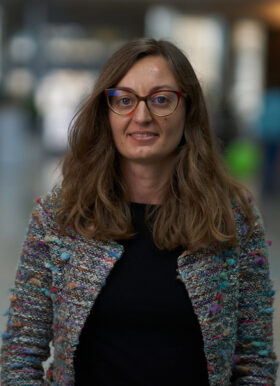
Tavoni Lab | Google Scholar Profile
Research
The Tavoni laboratory develops theories and models to understand how information is represented and processed in neuronal networks, and how brain computations adapt to changing environments and conditions. Areas of focus in the lab include:
Statistical and biophysical models of perceptual learning. Context has a powerful effect on the neuronal representation of sensory inputs. Accordingly, perception adapts to top-down information that is learned through experience, such as the salience or valence of sensory stimuli. We use coarse-grained statistical approaches and detailed biophysical models to unravel the brain mechanisms that underpin perceptual learning. Currently, the lab is studying the function of different forms of plasticity in these processes. We are particularly interested in how adult neurogenesis shapes information processing in the olfactory system, how it contributes to perceptual learning from an information-theoretic perspective, and how it differs computationally from more common (e.g. synaptic) forms of plasticity. Our theoretical approaches aim at interpreting existing experimental results as well as making predictions that can be tested in future experiments.
Bayesian and complexity theories of high-level cognition. We continuously gather noisy data through our senses to make inferences about past, present, and future states of the world. Accessible information, time and resources are limited and constrain the accuracy and complexity of feasible inference strategies. The lab develops normative theories to understand how efficient inference processes adapt their complexity to environmental uncertainty and task demands.
Reconstruction of the functional connectivity of decision circuits. In collaboration with the Padoa-Schioppa lab, we use techniques based on the inference of maximum entropy and non-stationary models to dissect the neuronal circuits underlying value representation and choice formation in the brain. The reconstructed connectivity will be used to develop data-driven dynamical models of the circuit function.
Statistical physics approaches to memory consolidation and retrieval. To acquire knowledge, we need effective ways to store and access information in the brain. Since the Hopfield model, the theory of spin glasses has provided a conceptual framework to study how memories are encoded and retrieved in attractor networks. The quantification of the memory capacity of these networks has been the subject of an extensive literature, which has also shed light on the optimal synaptic learning rules for storing information. Currently, our lab is interested in the complementary problem of memory retrieval. We use statistical physics to study the properties of the basins of attraction in neural networks and to identify stimulation protocols that optimize memory recall. This research can also help understand the mechanisms of memory consolidation, which are based on repeated activations of cortical attractors through inputs from other brain areas. Finally, we hope that these studies will help identify specific therapeutic targets for Alzheimer’s disease and other conditions that cause memory decline.
If you are interested in joining the lab as a post-doc or graduate student, please email Gaia Tavoni at gaia.tavoni@wustl.edu.
Selected publications
- Tavoni G, Doi T , Pizzica C, Balasubramanian V, Gold JI. Human inference reflects a normative balance of complexity and accuracy. Nature Human Behaviour. May 30, 2022; doi: 10.1038/s41562-022-01357-z.
- Tavoni G, Kersen DEC, Balasubramanian V. Cortical feedback and gating in odor discrimination and generalization. PLoS Computational Biology. Oct 11, 2021; 17(10): e1009479. doi: 10.1371/journal.pcbi.1009479.
- Tavoni G, Balasubramanian V, Gold JI. What is optimal in optimal inference? Current Opinion in Behavioral Sciences. 2019; 29:117-126.
- Tavoni G, Ferrari U, Battaglia FP, Cocco S, Monasson R. Functional coupling networks inferred from prefrontal cortex activity show experience-related effective plasticity. Network Neuroscience. 2017; 1(3):275-301.
- Cocco S, Monasson R, Posani L, Tavoni G. Functional networks from inverse modeling of neural population activity. Current Opinion in Systems Biology. 2017; 3:103-110.
- Tavoni G, Cocco S, Monasson R. Neural assemblies revealed by inferred connectivity-based models of prefrontal cortex recordings. Journal of Computational Neuroscience. 2016; 41(3): 269-293.
Education
2010, BS in Physical Engineering, Polytechnic of Turin
2012, International MS in Physics of Complex Systems, International university consortium (Polytechnic of Turin, International School for Advanced Studies and International Centre for Theoretical Physics of Trieste, Universities Pierre & Marie Curie, Paris Diderot, Paris-Sud and École Normale Supérieure at Cachan)
2015, PhD in Physics, École Normale Supérieure (Paris), Laboratories of Statistical and Theoretical Physics
2020, Post-doc in Theoretical Neuroscience, University of Pennsylvania, Computational Neuroscience Initiative
Selected honors
2024, Sloan Fellowship Award
2017, Swartz Foundation Fellowship Award for Theory in Neuroscience
2015, Computational Neuroscience Initiative Postdoctoral Fellowship
2010, admitted to the Alta Scuola Politecnica (declined)